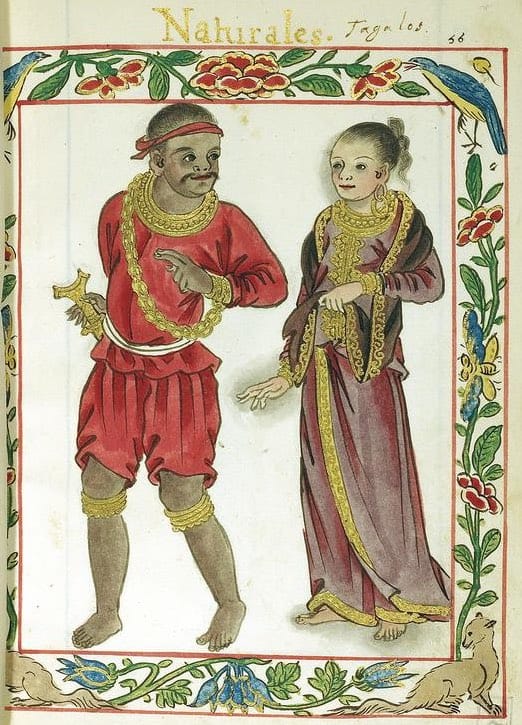
Pre-colonial history of the Philippines
Introduction
Imagine traveling back to a time before the Spanish conquest, when the islands of the Philippines were a thriving hub of trade, diplomacy, and cultural exchange. Among these ancient kingdoms, one name stood out—Ma-i Palawan.
Ma-i was a mysterious and powerful pre-colonial polity that flourished around the 10th to 14th centuries. Early Chinese records described it as a thriving trade center, where merchants from China, Champa (Vietnam), Borneo, and Java exchanged goods like ceramics, gold, and spices. While its exact location remains debated, many historians believe Ma-i was in Mindoro and parts of Palawan.
But what was Ma-i’s connection to Palawan? Could traces of this lost kingdom still be found along the Coron to El Nido route? Today, travelers can explore the remnants of Ma-i’s cultural and natural heritage while experiencing some of the best diving Philippines offers.
This journey isn’t just about history—it’s about adventure, discovery, and immersing yourself in the legacy of an ancient civilization. Let’s uncover the lost world of Ma-i Palawan and how you can experience its echoes on a breathtaking island tour.
The Rise of Ma-i: A Forgotten Kingdom of Wealth and Trade
1. What Was Ma-i?
✔ An ancient trading hub—one of the earliest documented settlements in pre-colonial Philippines.
✔ Mentioned in Chinese records from the Song Dynasty (10th-13th century).
✔ A center of gold, beeswax, pearls, and precious woods, attracting traders from across Asia.
📍 Fun Fact: Some scholars believe Ma-i was connected to the indigenous Tagbanua people of Palawan, who are known for their rich traditions and deep respect for nature.
2. Trade and Cultural Influence
Ma-i was a major player in early Southeast Asian trade networks, exchanging goods with powerful kingdoms like:
✔ China – Exporting pearls, gold, and tortoiseshell in exchange for silk and ceramics.
✔ Champa (Vietnam) and Borneo – Trading spices and exotic hardwoods.
✔ Java and Sumatra – Receiving cultural influences in language, craftsmanship, and navigation.
📍 Why It’s Important: Ma-i shows that the Philippines had thriving, independent civilizations long before colonial rule, challenging the idea that history only began with Spanish arrival.
3. The Decline and Legacy of Ma-i Palawan
Despite its prosperity, Ma-i gradually faded from historical records by the 15th century, likely due to:
✔ The rise of powerful sultanates in Mindanao and Borneo, shifting trade routes elsewhere.
✔ Increased piracy along the seas, making trade more dangerous.
✔ Spanish colonization in the 16th century, disrupting local power structures.
📍 Where Is Ma-i Today? While historians debate its exact location, artifacts and cultural practices in Palawan and Mindoro suggest deep historical connections to this lost kingdom.
Exploring the Legacy of Ma-i on the Coron to El Nido Tour
Even though Ma-i as a kingdom disappeared, its cultural and environmental footprint remains in the breathtaking landscapes and traditions of Palawan.
1. Must-Visit Sites Along the Coron to El Nido Route
✔ Kayangan Lake – Once a hidden sanctuary, this pristine lake mirrors the landscapes ancient navigators would have seen.
✔ Twin Lagoon – A natural wonder, reflecting the untouched beauty that pre-colonial islanders preserved.
✔ Culion Island – Once a leper colony, this island has layers of history that stretch beyond Spanish rule.
✔ Taytay Fort – A later Spanish fort, but built on top of indigenous trade routes that once connected Ma-i to the outside world.
📍 Why It’s Special: These locations hold whispers of a lost past, blending history with stunning island scenery.
2. Diving and Snorkeling Through Palawan’s Living History
Ma-i’s merchants once sailed these waters, but today, divers and snorkelers explore a different kind of treasure—Palawan’s vibrant marine ecosystems.
✔ Tubbataha Reefs Natural Park – A UNESCO World Heritage Site, home to thriving marine life.
✔ Coron’s WWII Shipwrecks – The sunken Japanese ships now serve as artificial reefs, preserving both history and marine biodiversity.
✔ Marcilla Marine Protected Area – A pristine diving location where corals and fish thrive under conservation efforts.
📍 Unforgettable Moment: Imagine swimming through history, where trade ships once sailed and local cultures flourished.
How Sustainable Tourism Keeps Ma-i’s Legacy Alive
1. Responsible Travel in Historical and Natural Sites
✔ Support eco-conscious tour operators that protect reefs and historical sites.
✔ Respect indigenous communities, such as the Tagbanua, who still safeguard their ancestral lands.
✔ Leave no trace – Preserve the untouched beauty that has remained for centuries.
📍 Pro Tip: Learning about the history of Ma-i deepens your appreciation for Palawan’s landscapes, making your trip more than just a sightseeing experience.
2. How Tourism Benefits Local Communities
Eco-tourism helps protect Palawan’s history and biodiversity by:
✔ Providing jobs for local guides, boat operators, and conservationists.
✔ Funding conservation projects that restore coral reefs and protect wildlife.
✔ Educating visitors on Palawan’s indigenous heritage and ancient trade networks.
📍 Why It Matters: By choosing a responsible Coron to El Nido tour, you become part of the movement to preserve both history and nature.
Conclusion
The story of Ma-i Palawan is a tale of trade, culture, and survival, echoing through the landscapes and traditions of Coron to El Nido. While the kingdom itself may have vanished, its legacy remains in the islands, the people, and the pristine waters of Palawan.
🌴 Are you ready to explore the echoes of a lost kingdom? Book your Coron to El Nido tour today and experience history, nature, and adventure like never before! 🏝️🐠🌊

